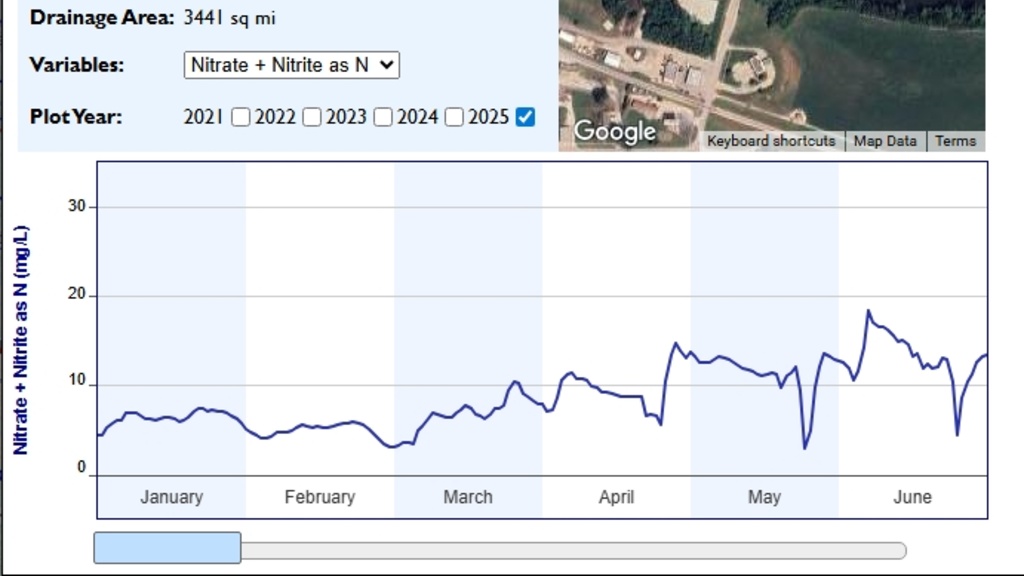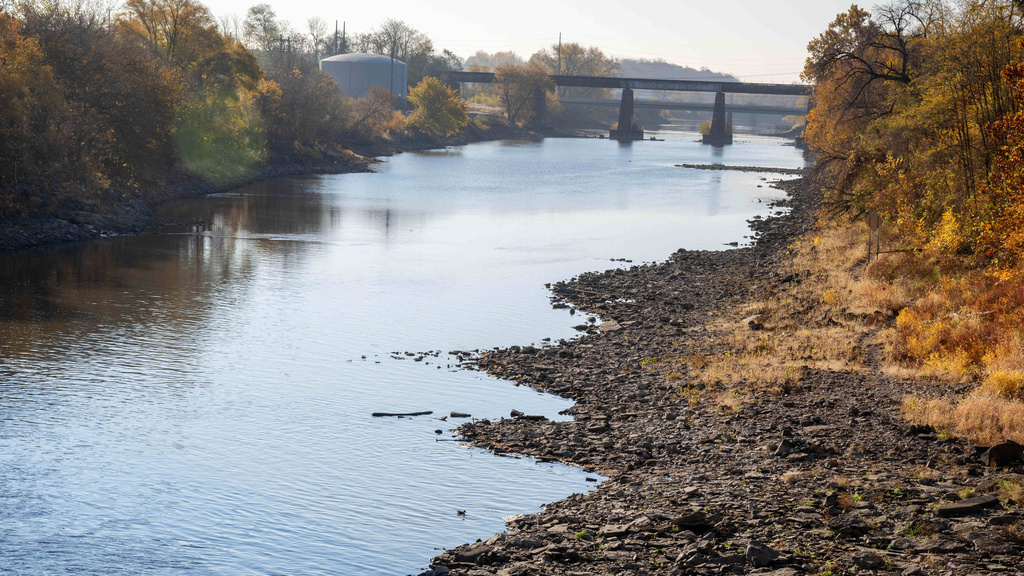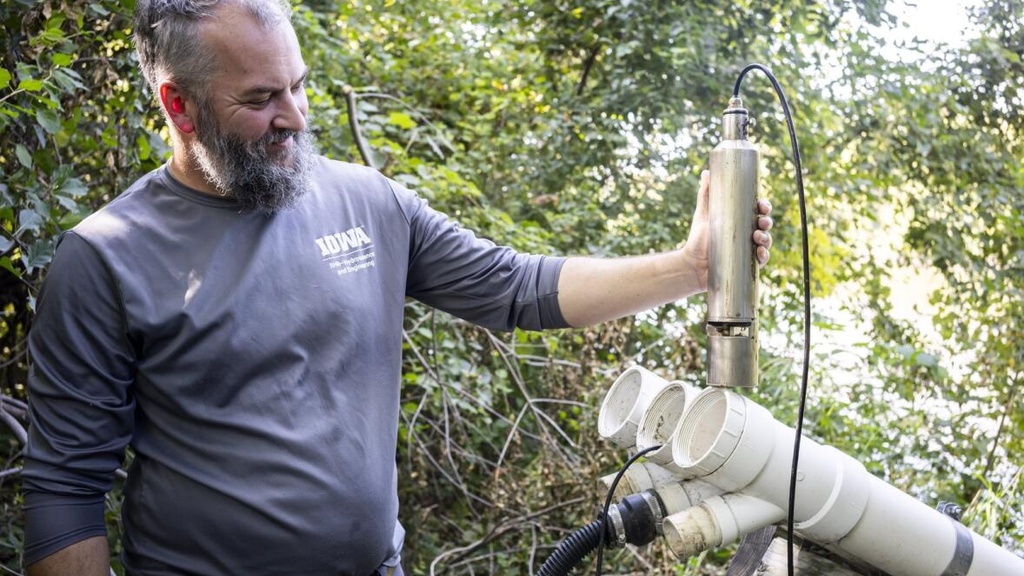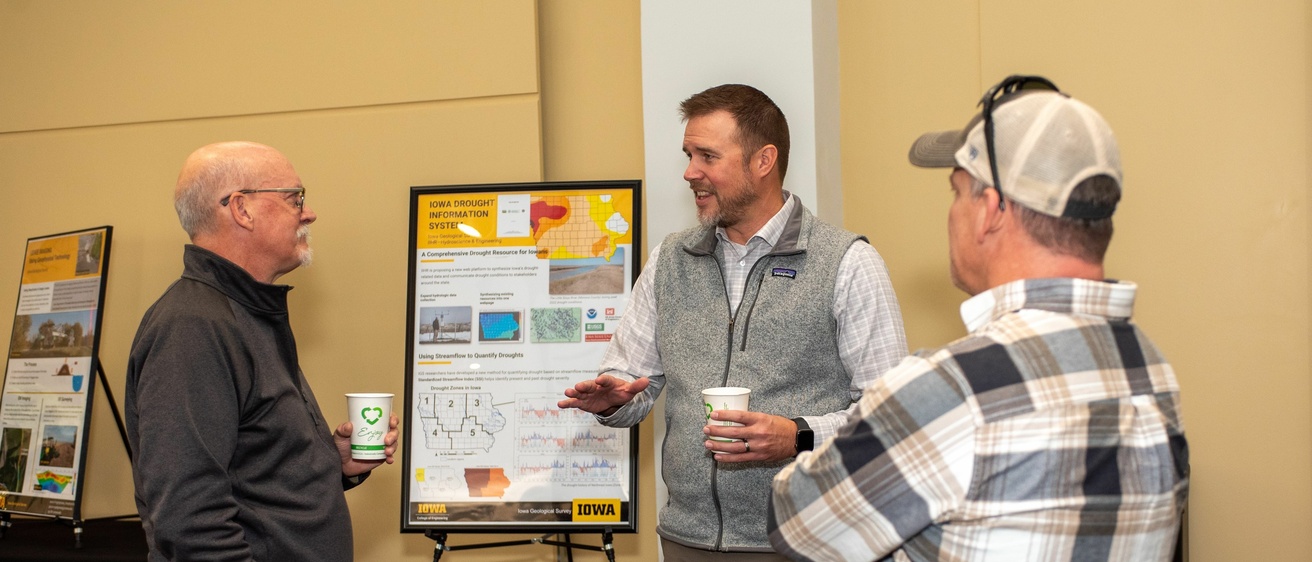
Do you have a compelling research story or know someone whose achievements deserve the spotlight? We want to hear from you!
Current Feature
News

Corn's clean-energy promise is clashing with its climate footprint
Thursday, December 4, 2025
Corn dominates U.S. farmland and fuels the ethanol industry. But the fertilizer it relies on drives emissions and fouls drinking water.

Nitrate levels in Iowa water remained high through fall, data show
Wednesday, December 3, 2025
Nitrate concentrations, exacerbated by a wet spring that followed years of dry conditions, reached near record highs in Iowa rivers this summer.
Concentrations are typically elevated in the summer. The past several years, nitrates have dropped to near-zero concentrations in late summer through early winter. But this year, concentrations in rivers and in central Iowa’s drinking water have remained high.

Staff Spotlight: Felipe Quintero
Monday, December 1, 2025
Since joining IIHR—Hydroscience and Engineering in 2013, Felipe Quintero quickly became a key contributor advancing research and education in support of the Iowa Flood Center (IFC).

Energy, water use under close watch as data centers expand in Iowa
Monday, December 1, 2025
The Technology Association of Iowa recently hosted the Iowa Data Center Summit, which was meant in part to ask how Iowa can balance demand for data centers and environmental responsibility.

Johnson County weights $200,000 request to keep Iowa water sensor network running
Wednesday, November 19, 2025
The UI-run network, once funded by the state, now relying on counties and donations to avoid closure

Funding bill includes $16 million for earmarked
Wednesday, November 19, 2025
The bill President Donald Trump signed on November 12 to end the longest federal government shutdown includes $16 million for designated projects in Iowa, according to Bleeding Heartland’s analysis of a Senate Appropriations Committee report.

'Water Quality is Degrading, There Is No Question About That:' University of Iowa Researcher Warns
Thursday, November 13, 2025
The Winneshiek County Board of Supervisors on Monday heard from Larry Weber, director of civil and environmental engineering at the University of Iowa regarding the future of Iowa’s statewide water quality monitoring network, which faces uncertainty following state funding cuts.

University of Iowa geophysicist uses new tech to survey Iowa levees
Wednesday, November 12, 2025
Jason Vogelgesang, a geophysicist with the Iowa Geological Survey, talks on Oct. 29, 2025, about a statewide scanning process the University of Iowa group is doing for the state legislature and levee districts. By using electricity pulses, IGS can detect anomalies — possibly leaky spots — in Iowa's levees. The novel way IGS has rigged their equipment drastically improves efficiency.

IIHR program manager Kate Giannini receives Fulbright award for a research exchange in the Netherlands
Monday, November 10, 2025
Kate Giannini, program manager at IIHR—Hydroscience and Engineering, has been awarded a Fulbright and will be hosted by Deltares located in Delft, Netherlands for a six-week exchange beginning at the end of December 2025.

Levee survey a proactive step to protecting Iowa communities
Monday, November 10, 2025
The Iowa Geological Survey is undertaking a comprehensive five-year project to survey and assess Iowa's 900 miles of levees using cutting-edge geophysical technology, an important precautionary measure to ensure flood protection is ready for the next natural disaster.

